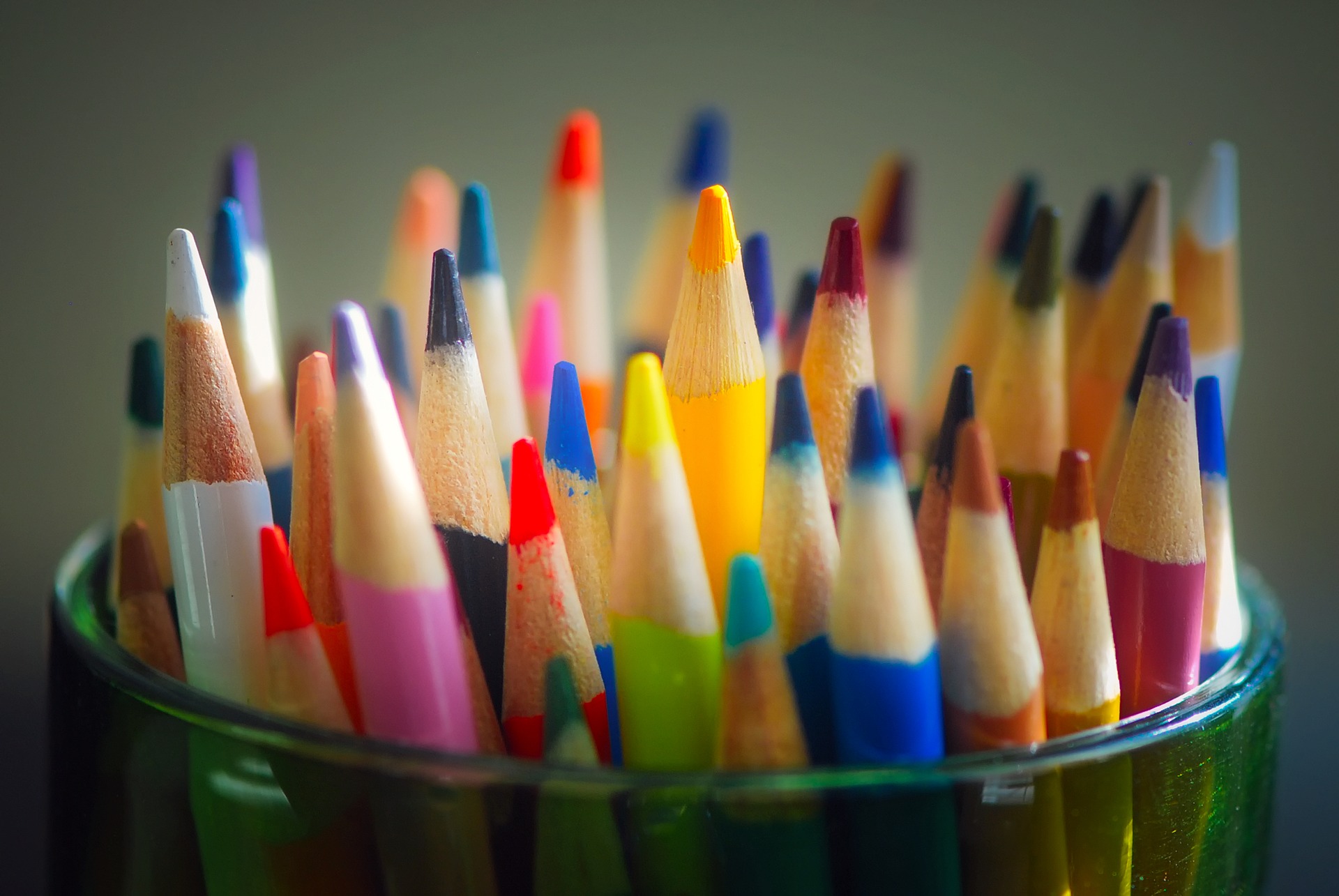Guide to Shading with Pencils

Shading can add dimension, depth, and realism to your drawings, paintings, and other artworks. When done correctly, shading can make your work look more professional and polished. Additionally, shading can help create the illusion of light and shadows, making your work appear more three-dimensional. By learning shading techniques, you can take your art to the next level.
There are a variety of shading techniques that you can use to achieve different effects. Experiment with different shading techniques to see what works best for your particular project. With a little practice, you'll be able to produce stunning results that will impress your friends, family, and others who see your work.
What do you need to start shading:
To begin shading with pencils, you will need:
- a set of pencils with a range of lead hardness
- a kneaded eraser
- a sharpener
- paper
You may also want to have a white vinyl eraser on hand to lighten areas as needed.
Choosing the best pencil for shading:
The type of pencil you use for shading is also very important. A too soft pencil will produce a lot of powder and make shading difficult. A too hard pencil will produce ugly scratches. The best type of pencils to use for shading are the medium hardness B or 2B pencils. These pencils are soft enough to create beautiful shading, but not so soft that they're difficult to control.
When shading, it's also important to use a pencil with a fine point. This will give you more control over the shading process and produce cleaner lines. Having a sharp point is especially important when shading small areas.
Finally, make sure you choose a pencil that produces dark lines. This will make shading easier and produce better results. Look for pencils that are specifically labelled as "shade" or "hue" pencils. These pencils are designed to produce dark, rich lines that are perfect for shading.
Shading Techniques
Here are some of the most popular shading techniques that you can incorporate in some of your drawings:
Hatching:
Hatching is a shading technique often used by artists to create a sense of depth and texture. This technique involves drawing parallel lines close together on the paper. The closer the lines are, the darker the shading will be. Hatching can be done with any type of pencil, but is most commonly seen with pencils that have lead that is soft enough to produce a dark line.
By varying the thickness, density and direction of the lines, artists can create shading that looks like fur, grass, wood grain, or any other type of texture. This technique is also often used to create shadows in drawings.
To create a hatching effect, start by drawing a few lightly spaced parallel lines. Then, go over the lines with a darker pencil or pen to make the shading more pronounced. You can also vary the width of the lines to create different types of shading effects. Hatching is a versatile shading technique that can be used to create many different types of drawings and sketches.
Cross Hatching:
Cross hatching is a shading technique that uses a series of parallel lines to create darker areas on a drawing. This is done by first drawing a set of close, parallel lines in one direction. Then, another set of close, parallel lines are drawn over top of the first set, but in the opposite direction. The result is a series of intersecting lines that create a darker area on the paper.
This shading technique can be used to create different levels of darkness, depending on how many sets of lines are drawn over top of each other. For a more subtle effect, only two or three sets of lines may be used. For a more dramatic effect, four or five sets of lines may be used.
Cross hatching is a great shading technique to use when drawing with pencils, because it allows you to create a range of tones and depths. It can also be used with other media, such as charcoal, markers, and even paint. Experiment with different line thicknesses and directions to see what effects you can create!
Stippling:
Stippling is a shading technique that uses small dots to create darker areas on a drawing. This is done by placing a series of small dots close together on the paper. The closer the dots are, the darker the shading will be. Stippling can be done with any type of pencil, but is most commonly seen with pencils that have lead that is soft enough to produce a dark dot.
By varying the size and density of the dots, artists can create shading that looks like fur, grass, wood grain, or any other type of texture. This technique is also often used to create shadows in drawings.
To create a stippling effect, start by drawing a few lightly spaced dots on the paper. Then, go over the dots with a darker pencil or pen to make the shading more pronounced. You can also vary the size of the dots to create different types of shading effects. Stippling is a versatile shading technique that can be used to create many different types of drawings and sketches.
Circling:
Circling is a shading technique that uses small circles to create darker areas on a drawing. This is done by placing a series of small circles close together on the paper. The closer the circles are, the darker the shading will be. Circling can be done with any type of pencil, but is most commonly seen with pencils that have lead that is soft enough to produce a dark circle.
To create a circling effect, start by drawing a few lightly spaced circles on the paper. Then, go over the circles with a darker pencil or pen to make the shading more pronounced. You can also vary the size of the circles to create different types of shading effects. Circling is a versatile shading technique that can be used to create many different types of drawings and sketches.
Just remember, shading can add depth and dimension to your drawings, and it's a great way to add interest to otherwise flat images. With a little practice, you'll be shading like a pro in no time!
Tick Hatching:
Tick hatching is a shading technique that uses small ticks or dashes to create darker areas on a drawing. This is done by placing a series of small ticks or dashes close together on the paper. The closer the ticks or dashes are, the darker the shading will be. Tick hatching can be done with any type of pencil, but is most commonly seen with pencils that have lead that is soft enough to produce a dark tick or dash.
To create a tick hatching effect, start by drawing a few lightly spaced ticks or dashes on the paper. Then, go over the ticks or dashes with a darker pencil or pen to make the shading more pronounced. You can also vary the size of the ticks or dashes to create different types of shading effects.
Contour Hatching:
Contour hatching is shading using pencils to create the illusion of depth and volume. This technique is often used by artists to add shading and dimension to their drawings.
To contour shade, start by lightly drawing parallel lines close together. Then, fill in the spaces between the lines with crosshatching (drawing intersecting lines). The closer the lines are to each other, the darker the shading will be. You can also vary the pressure of your pencil to create different shades of grey.
Scribbling:
When shading with pencils, scribbling is a technique where you quickly move your pencil back and forth over an area to create a textured effect. This can be used to fill in large areas or to add shading to drawings.
To do this, hold your pencil lightly in your hand and make quick, small strokes across the paper. You can vary the pressure you apply to create different effects. For a more subtle shading, use light pressure. For a darker shading, use more pressure. You can also experiment with different pencils to see how they produce different results.
Things to remember when starting out with shading:
When shading with pencils, there are a few things to keep in mind. First, use a light touch when shading. Second, use different strokes for different effects. Third, experiment with different types of pencils.
Light Touch: A light touch is important when shading. This will help you create an even shade without leaving behind pencil marks.
Different Strokes: Different strokes can create different effects. For example, using small strokes will create a finer shading, while using large strokes will create a coarser shading.
Different Pencils: Experimenting with different types of pencils can also create different effects. For example, using a softer pencil will create a lighter shading, while using a harder pencil will create a darker shading.
When shading, it is also important to work slowly and patiently to build up layers of colour. Begin by sketching out your subject matter lightly in pencil. Then, start adding shading using the lightest pencil in your set. Work your way up to the darkest pencil, adding layers of shading until you achieve the desired effect. Be sure to take breaks and sharpen your pencils often to keep them working well.
Shading is a great way to add dimension and interest to your drawings. With a little practice, you'll be shading like a pro in no time!
